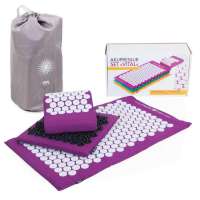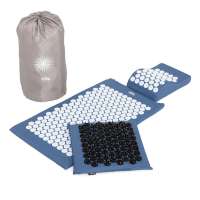
Strength training is one of the most effective methods to improve physical fitness and promote health. It not only helps build muscles but also increases bone density, improves posture, and strengthens the immune system. However, despite these benefits, many people have no experience with strength training.
Why?
Many assume that strength training is only suitable for bodybuilders and professional athletes. Or they do not know how to get started and are afraid of risking injuries. But the truth is, anyone can benefit from the advantages of strength training, regardless of age, gender, or fitness level.
In this article, we will show why strength training is important and how you can get started.
-
The Benefits of Strength Training
-
The First Step
-
The Importance of Nutrition
-
Mistakes to Avoid
1. The Benefits of Strength Training
Strength training aims to improve the strength, size, and endurance of muscles through the use of weights, machines, or other forms of resistance. The goal of strength training is to specifically challenge the muscles and stimulate the corresponding muscle fibers to achieve adaptation in the body. This can involve a variety of exercises targeting specific muscle groups, such as squats for the legs or bench presses for the chest muscles. Both free weights and machines, as well as bodyweight exercises, can be used for strength training.
Strength training offers many benefits. Here are the key ones.
-
Increase in Muscle Mass
One of the most obvious effects of strength training is an increase in muscle mass. Regular training allows muscles to be utilized and built more effectively. This can lead to better muscle definition and an overall stronger body. Increased muscle mass can also help reduce the risk of injuries in daily activities.
-
Improvement in Posture
Strength training can also contribute to better posture. Many people develop poor posture due to sedentary jobs or other activities. By specifically training the muscles in the back and shoulder areas, these postural patterns can be improved. Having an upright posture not only looks better but also promotes a healthier body overall.
-
Boost in Metabolism
Another positive effect of strength training is an increase in metabolism. Calories are burned during exercise, and the metabolism remains elevated for a period of time even after the workout. This means that the body continues to burn calories post-workout. Increased muscle mass can also help boost overall metabolism, as muscles require more energy than fat tissue.
-
Injury and Disease Prevention
Strength training can help prevent injuries and diseases. Stronger muscles stabilize joints and ligaments, reducing the risk of injuries. Regular strength training can also help prevent conditions like osteoporosis, as it contributes to strengthening the bones.

2. The First Step
When starting with strength training, there are some important aspects to consider to ensure that you achieve the best possible results and avoid injuries.
Planning
Before beginning strength training, it's important to create a plan. Think about what goals you want to achieve and how you want to structure your training. For example, if you want to build muscle mass, you should focus on a training program that emphasizes progressive overload. If you want to lose weight, you should also incorporate cardio training into your program. It's also important to plan your training to fit into your schedule and allow enough time for rest and recovery.
Equipment
You don't need expensive equipment for strength training. However, there are some basic equipment items you should have to train safely and effectively. These include:
-
Barbells
-
Dumbbells
-
Kettlebells
-
Training benches
-
Resistance bands
-
Yoga mats
If you don't want to go to a gym, you can also train at home. Make sure you have enough space and that the floor is stable and non-slip.
Progression
When starting with strength training, it's important to proceed slowly and steadily increase the intensity. Begin with a light weight load and gradually increase it. It's important to maintain proper form and not push yourself too hard to avoid injuries. You can track your progress by regularly measuring your strength and muscle gains.
Exercises for Beginners
Focus on simple exercises that help you learn the correct form and technique. Here are some examples:
-
The bodyweight squat is an excellent exercise for beginners as it requires no additional equipment and targets the lower body. Start by squatting down with a straight back as if you were sitting on a chair, then slowly return to the upright position. Make sure your knees do not go past your toes and engage your muscles actively.
-
Another important exercise for beginners is the barbell squat. Hold the barbell on your back and slowly go into a squatting position before returning to the starting position. Ensure that your knees do not go past your toes and maintain your body tension.
-
Bench pressing is a fundamental exercise for the chest muscles and can also be performed by beginners. Lie on a flat bench and hold a barbell over your chest. Slowly lower the barbell towards your chest before pushing it back up. Make sure your elbows do not flare out too much, and keep your shoulders pulled down during the exercise.
Remember that it's important to focus on proper form and technique with each exercise to avoid injuries. Start with a light weight load and gradually increase it to strengthen and tone your muscles. If you have any questions, consult a certified trainer or fitness expert who can help you develop an effective training program tailored to your needs and goals.

3. The Importance of Nutrition
A balanced diet is a crucial factor for a successful fitness routine. It helps provide the body with the necessary nutrients to support muscle building and repair and supply energy for effective training. Here are the key aspects of nutrition for fitness enthusiasts.
Macronutrients
Macronutrients, also known as "macros," include proteins, carbohydrates, and fats. Proteins are especially important for muscle building and should make up about 20-30% of your daily calorie intake. Good sources of protein include meat, fish, eggs, dairy products, and plant-based options like beans, tofu, and quinoa.
Carbohydrates provide the necessary energy for your workouts and should account for about 45-65% of your calorie intake. Good sources of carbohydrates include whole grains, fruits, and vegetables. Fats should make up about 20-35% of your calorie intake and can come from healthy sources like nuts, seeds, avocado, and olive oil.
Micronutrients
Micronutrients include vitamins and minerals that are essential for various bodily functions. A balanced diet with a variety of fruits, vegetables, whole grains, and proteins can help ensure an adequate intake of micronutrients. Particularly important micronutrients for fitness enthusiasts include calcium, magnesium, iron, vitamin C, vitamin D, and B vitamins.
Hydration
Adequate hydration is essential for a successful fitness routine. Water helps keep the body hydrated and supports metabolism. It is recommended to drink at least 2 liters of water per day, depending on your body size, weight, and exercise intensity. It's also important to drink enough water during your workouts to compensate for fluid loss.
Overall, a balanced diet is a crucial factor for the success of your fitness routine. Combining macro- and micronutrients in the right amounts and staying hydrated can help you reach your goals and keep your body healthy. It's also important to choose a nutrition plan that suits your personal lifestyle and training schedule.
What should I eat before and after strength training?
Before and after strength training, it's important to provide your body with the right nutrients to achieve the best results from your workout. Here are some recommendations for pre and post-strength training nutrition:
Before Strength Training:
-
Carbohydrates: A carbohydrate-rich meal 1-2 hours before training can replenish the energy stores in your muscles and provide you with the energy you need during your workout.
-
Proteins: Proteins are important for muscle building and repair. Consuming a protein-rich meal before training can help prevent muscle breakdown during the workout.
-
Water: It's important to stay hydrated to avoid performance declines. Drink enough water 1-2 hours before training.
Examples of pre-strength training meals:
-
Whole-grain bread with eggs and avocado
-
Oatmeal with fruits and yogurt
-
Chicken with vegetables and brown rice
After Strength Training:
-
Proteins: After your workout, your muscles need additional protein to recover and repair. Consuming a protein-rich meal within 30 minutes after training can help minimize muscle breakdown and promote muscle growth.
-
Water: Drink enough water after your workout to hydrate your body and replace lost fluids.
Examples of post-strength training meals:
-
Cottage cheese with fruits and nuts
-
Grilled salmon with roasted vegetables and quinoa
-
Smoothie with banana, spinach, almond butter, and protein powder
It's important to listen to your body and figure out which meals and snacks work best for you. Make sure to hydrate your body adequately and provide it with the nutrients it needs to perform at its best.

4. Mistakes to Avoid
When starting with strength training, it's important to keep your goals and expectations realistic and focus on the right approach. By avoiding some common mistakes, you can train more effectively and prevent injuries. Here are three mistakes you should definitely avoid:
Overtraining
Many people who start strength training have the goal of building muscles quickly and intensely. However, this can lead to training too much and too often, which can result in overtraining and injuries. It's important to give your body time to recover from the training sessions. Avoid training the same muscle groups every day.
Lack of Progression
Another common mistake is that many people give up on their training after a few weeks or months because they don't see progress. Progress and improvement are long-term processes that require time and dedication. If you train regularly, make sure to monitor your training plans and progress. Aim to gradually increase weights and repetitions and stick to your training plan.
Did you know? It can take up to a year to notice visual differences. That's because you see yourself every day and can be blind to small changes. Therefore, don't measure your progress solely based on appearance but also on your performance during training. How difficult is this exercise compared to last week? Do I still get out of breath as quickly?
Lack of Correcting Form and Technique
Incorrect form and technique during training can lead to injuries and pain. If you're new to strength training, take the time to improve your form and technique before lifting heavy weights or performing intense exercises. Seek out a qualified trainer or watch online videos to get tips on improving your form and technique. Also, take the time to record your training sessions and review your form and technique.
By avoiding these mistakes and focusing on proper training techniques, you can have a safer and more effective strength training experience. Remember to listen to your body, give yourself time to recover, and enjoy the process of improving your fitness and strength.
How did you like the article?
With your feedback, we can improve our content.
❤️ Very interesting! - ☺️ Okay. - ☹️ Not interesting.











